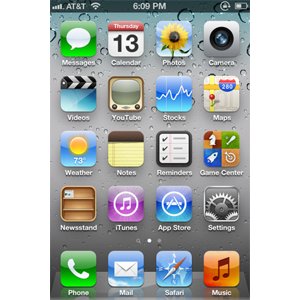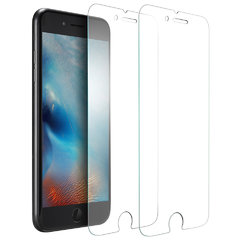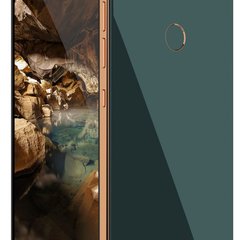Brief history of iOS - all the Things that you Should Know

iOS 1 (iPhone OS 1)
With the year 2007 begins our brief history of iOS. The year that the animated movie Happy Feet won the Oscars and Steve Jobs introduced us to iPhone and iPhone OS 1. Comparing iOS 1 to the latest version of iOS seems a bit crazy, but here’s why back then iOS 1 was a must-have. First of all, iOS 1 and iPhone brought a massive hype because they made possible putting iPad, camera, phone, and internet into one, square-shaped device, that comfortably fits into the pocket. Another plus was that iPhone looked pretty tasteful if you ask us, as a multifunctional chocolate bar. Nom! And, how can we forget about the iPhone’s screen, that made such a huge change and was a breath of fresh air compared to BlackBerry’s robust design? No hard feelings, BlackBerry.iOS 2 (iPhone OS 2)
In this brief history of iOS, we can positively say that iOS 2 was one of Apple’s most significant milestones. Released on July 11, 2008, iOS 2 made a huge difference in the market - it showed what a smartphone can do, by adding third-party apps, which the users, until this day, can find on App Store. More than 500 apps were available in the App Store launch. When it comes to an Internet connection, Apple made a move - building in 3G and GPS technology. Since we can’t look away from eternal Apple vs. Google fight, we must mention that Apple beat Google when it comes to third-party apps. Android released Android Market, older version of Play Store, just a month later.iOS 3 (iPhone OS 3)
This part of a brief history of iOS is not that interesting. iOS 3 might as well carry the title of ‘Sleek design, nothing more phone.' Not to sound rude, but in 2009, Apple didn’t shock the market in any way, it just polished what has already been done. Sleek notifications, copy/paste options, MMS, the ability to record a video with a Camera app and all that good stuff we were so happy about. What was great about this version was that Apple tried to make it as user-friendly as it was possible, so some of the apps looked pretty amazing.iOS 4
iOS 4 brings the big guns into our brief history of iOS. First of all, this was the time that Apple decided to erase the ‘iPhone’ from the name of this operating system. But that wasn’t all. Please, give it up for FaceTime and Multitasking! FaceTime was a huge deal back then. Remember, there was no Skype on smartphones in 2010. Skype came into the picture a few years later. Apple had the app that was completely innovative, worked well and that users loved. However, Apple had to steal a few things from the competitors. Just like Android, iOS 4 had added grouped features.iOS 5
In 2011, Apple made us clear that iOS isn’t a baby anymore. And it made us clear with Siri and iOS 5. The world welcomed Siri, a virtual assistant, with the hands wide open, and it was no surprise. Siri was (and still is) reliable and highly functional. It can even tell jokes! Another news was iMessage and iCloud, which was a glimpse of what Apple can do. By creating iMessage, Apple entered the new market and gained new ‘enemies,' such as WhatsApp.iOS 6
In 2012, we watched a movie called Dark Knight Rises. Ironically, this is an excellent metaphor for Apple, as a company. In 2012 Apple released an Apple Maps in iOS 6, which was an attack on Google Maps. We bet you are thinking that this brief history of iOS just got a lot more interesting. Don’t worry, nothing terrible happened, but Apple lost the battle. According to Bryan X. Chen in a post for New York Times, Timothy D. Cook, Apple’s CEO, explained that Apple Maps hasn’t fulfilled the company’s standards. There was, even more, controversy involved - Tim Cook asked Scott Forstall to make a public apology, and Scott refused. Soon enough, iOS development department gained a new headmaster. By the way, the users weren’t happy either - they said that the map is showing incorrect results. Damn, Apple, you could have done it better!iOS 7
Drum rolls, please! iOS 7 is the part of this brief history of iOS an operating system that made a significant step into the future. Let start with the design - better icons, better-designed phones. Apple also made a significant change, which is more of a hardware type, but we can’t forget to mention it - Touch ID. And then, new apps - AirDrop, iTunes radio. In 2013, Apple really made an effort.iOS 8
Did you think that Apple vs. Google fight is ever going to stop? If you did, you were wrong. In this brief history of iOS, we bring you facts. In 2014, with iOS 8 Apple decided to turn the tables around and add widgets. There is no secret that Android users have been enjoying them for quite some time. It was Apple’s turn to make a statement. Adding a customizable keyboard and a possibility to share files between the apps were the good news. Then, Apple introduced us to Home Kits, Health Kits, and few others and also an improved iCloud platform and entirely secure Apple Pay.iOS 9
When it came to showing off iOS 9, Apple knew we’ve seen it all. This brief history of iOS also confirmed that. That’s why the company decided to go for the updates. Apple updated Siri, which works exceptionally well. Since Google Assistant made its way into the market, everyone was skeptical and not so much into Siri. Apple showed them that Siri is useful and productive as it has always been. On the other hand, there are two new features that we love - 3D Touch and Night Shift. 3D Touch that saves the time on getting into the app, by offering a shortcut. Night Shift helps you fall asleep faster, by changing the screen colors into the warmer ones. There’s a whole science behind this feature.iOS 10
One word for iOS 10: third-party integration. You may be surprised, ‘cause Apple has done this, but not quite like this. Third-party app integration within the Siri and iMessages. It leaves us guessing what Siri is going to be able to do, and is iMessages going to become like favorite messaging apps - Viber and WhatsApp. Also, keep in the mind that some of the built-in apps had been deleted. More room for the good stuff.iOS 11
This is a huge moment in this brief history of iOS. By creatingiOS 11 Apple literally said: Welcome to the future. Firstly, we must mention that Siri still works good and that icons design stayed the same. The most prominent surprise is AR (Augmented Reality) support. This includes the fabulous emojis that allow you to become an animated emoji. If you want to know more about iOS 11, check out our previous post - iPhone 8 vs. iPhone X.A lot more than 3 Musketeers
Eleven musketeers, to be precise. Apple has shown us that being the innovator is not always the goal, but keeping an eye on the market is a must. Knowing the consumer and being able to adjust to its desires is the number one thing. You know this brief history of iOS doesn’t end up here. Apple, you do you! Strive for the best, never be like the rest.Kategorije
Futuristic Future Review Market Compare models Coming Soon General New Technologies News Actual Alcatel Tips Huawei Gorilla glass Comparation Smartwatch Apps Software Apple Blackberry HTC Motorola Nokia Sony LG Samsung Android Sony Ericsson Interesting Little school Inovations Microsoft Symbian iOS Acer Google Games Popular
Popularne objave
Oznake
New model Android Samsung nokia apple iPhone review Inovations HTC Blackberry iOS Google LG motorola Operative system research sony Galaxy update market share Samsung Galaxy S8 galaxy s5 Ice Cream Sandwich LG G3 price Sony Ericsson AMOLED LG G3 Future vision Gingerbread definition Tablet camera Huawei game iPhone 5S LG G3 screen
traži
Pretražite i pogledajte najnovije postove na blogu.









